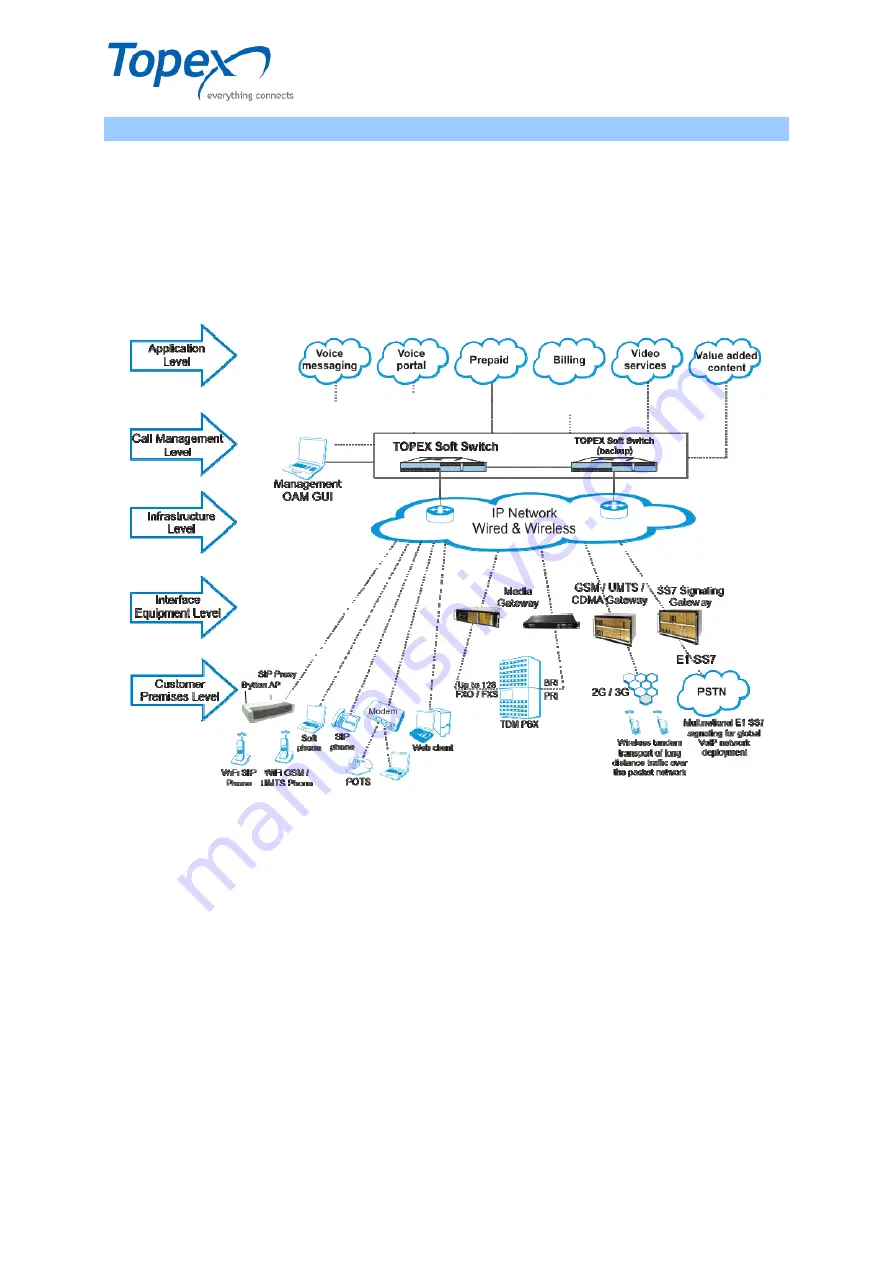
multiSwitch – user manual
© TOPEX 2008 10
2
SYSTEM OVERVIEW
At present, two totally independent networks exist: the PSTN network and the data network,
which provide the voice service and basic data service respectively.
Network separation and isolation of operation & maintenance have been keeping the general
network operation & maintenance costs on a high level, and furthermore, a network cannot provide
complicated convergence services, although the network convergence has been an inevitable trend.
Hierarchical models are adopted for the MultiSwitch - based Next Generation Network (NGN).
The entire network can be divided into five levels: Application Level, Call Management Level,
Infrastructure Level, Interface Equipment Level and Customer Premises Level, as shown in Figure 1.
Figure 1 – Next Generation Network based on the MultiSwitch Technology
Below will be described all the component levels of the Next Generation Network architecture
starting from the base to the top (as you can see in Figure 1):
Customer Premises Level
– it refers to the terminals which are accessible to the common users. This
level include among other equipments: SIP Phones, GSM terminals, modems, Soft Phones,
computers, analogue phones, etc.
Interface Equipment Level
– this layer refers to various access gateways and new types of access
terminal devices related to the current network. It implements interworking between the devices
located at the “Customer Premises Level” and the “Infrastructure Level”. This level contains
several gateways manufactured by TOPEX such as Media Gateway, GSM / UMTS / CDMA
Gateway and SS7 Signalling Gateway.
Infrastructure Level
– The Infrastructure Layer refers to a packet switching network composed of
backbone transmission equipment such as IP router or broadband ATM switch, which is the
bearer basis of a MultiSwitch network.
Call Management Level
– refers to MultiSwitch control units, which completes integrated control
processing functions such as call processing control, access protocol adaptation, interconnection
and interworking and provides an application support platform for the entire network.











































